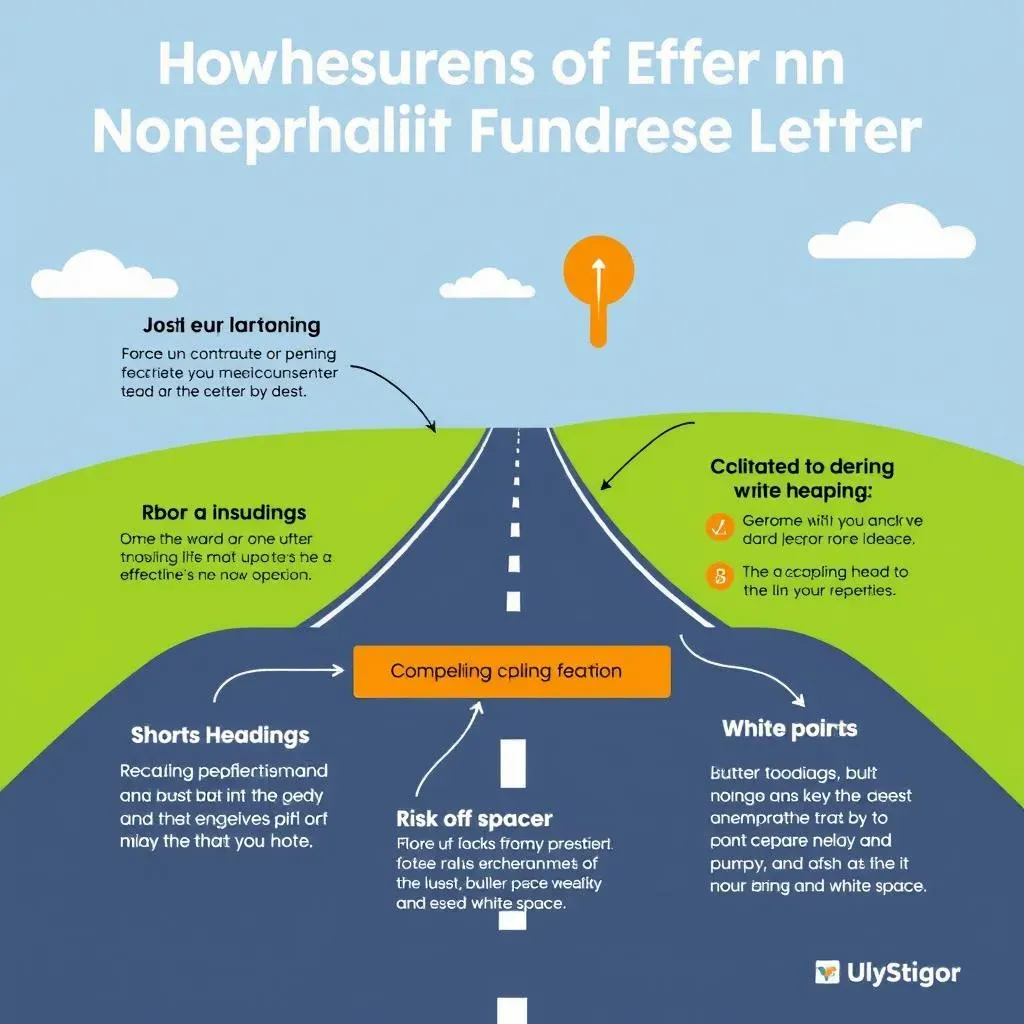Table of Contents
Want to transform your non-profit's fundraising efforts? Mastering the art of writing a compelling fundraising letter is key to unlocking generous donations and building lasting donor relationships. This article provides a practical guide on how to write an effective non-profit fundraising letter, equipping you with the skills to craft persuasive appeals that resonate with potential donors. We'll explore the crucial elements of storytelling, demonstrating how to vividly paint a picture of your organization's impact and the urgent need for support. You'll learn how to structure your letter for maximum impact, guiding readers seamlessly through your message and inspiring them to take action. We'll cover everything from crafting a compelling narrative and using specific examples to highlight your work, to strategically incorporating calls to action and outlining various donation methods. By the end, you'll have the tools and confidence to write fundraising letters that not only secure vital funding but also cultivate a strong sense of community around your cause. Let's dive into the essential steps to master the art of "How to write an effective non-profit fundraising letter".
Crafting a Compelling Narrative: The Heart of Your NonProfit Fundraising Letter

Crafting a Compelling Narrative: The Heart of Your NonProfit Fundraising Letter
Start with a Hook
Hey friend, so you're tackling non-profit fundraising letters? That's awesome! The key is grabbing your reader instantly. Think of it like a really good story – you need a hook, something that makes them want to keep reading. Don't bury the lede! Start with a powerful anecdote, a striking statistic, or a poignant question that immediately highlights the problem your organization is tackling. For example, instead of saying "We help homeless people," try starting with "Imagine a child sleeping on a park bench, cold and alone..." That's a hook!
Remember, people connect with stories, not spreadsheets. Think about how you can personalize the experience. Use real names and specific details whenever possible. Instead of "Many people need help," try "Meet Sarah, a single mother struggling to feed her children..." That makes it real.
Weak Opening | Strong Opening |
|---|---|
Our organization supports education. | Maria, a bright 8-year-old, dreams of becoming a doctor, but lacks access to quality education. |
Show the Impact, Don't Just Tell It
Once you've hooked them, you need to show the impact of your organization's work. Don't just list your accomplishments; paint a picture. Use vivid language that evokes emotions. If you've helped a family get back on their feet, describe their journey – their struggles, their triumphs, their renewed hope. If you've cleaned up a polluted river, describe the vibrant ecosystem that's returning. Let the reader experience the difference you make.
Think about using strong verbs and sensory details. Instead of "We provided food," try "We delivered warm meals, filling empty stomachs and bringing smiles to weary faces." See the difference? It's all about creating that emotional connection. Remember to link back to your initial hook, connecting the beginning and end of the story. A great story will have a beginning, middle, and end.
- Use strong verbs (rescued, transformed, empowered)
- Include sensory details (the smell of freshly baked bread, the sound of children laughing)
- Focus on human connection (show the faces of those you help)
End with a Clear Call to Action
Your compelling narrative needs a powerful ending. This is where you make your ask – clearly and concisely. After showcasing the positive impact you make, you need to give the reader a way to get involved. Make it easy for them to donate. Provide clear instructions on how to donate online, by mail, or through other methods. Make sure your website is easy to navigate, and that your donation process is straightforward. A simple, clear call to action is crucial.
Consider adding a personal touch to your closing. Maybe a quote from someone you've helped, or a simple expression of gratitude for their consideration. Remember, this isn't just about getting a donation; it's about building a relationship. A well-crafted closing leaves a lasting impression and encourages future engagement. Check out this guide on online fundraising platforms to streamline donations.
Show, Don't Tell: Using Specific Examples to Make Your Case

Show, Don't Tell: Using Specific Examples to Make Your Case
Beyond the Statistics: Show the Human Element
Okay, so we've talked about the power of storytelling, but let's get practical. One of the biggest mistakes non-profits make is relying solely on statistics. "We served 1,000 families" is fine, but it's not memorable. Instead, pick *one* family. Tell their story. Describe their struggles before your intervention, and then their success *because* of your help. Maybe it's the single mom who finally got a stable job thanks to your job training program, or the child who can now read because of your literacy initiative. Focus on the transformation. Make it personal.
Think about using specific details. Instead of saying "We helped people find jobs," describe the job a specific person found – what kind of job is it? What does it mean for their family? What are their hopes and dreams for the future? The more specific you are, the more your readers will connect. Check out this article on choosing the right fundraising platform to make donating easier.
Vague Example | Specific Example |
|---|---|
We provided shelter. | Ten-year-old Miguel and his family now sleep soundly in a warm bed at our shelter, after months of sleeping in a car. |
Use Powerful Imagery and Sensory Details
Remember, you're not just writing words; you're painting a picture. Use vivid language that appeals to all five senses. If you're describing a community garden you helped create, don't just say it's beautiful; describe the vibrant colors of the flowers, the rich smell of the soil, the feel of the sun on your skin as you work alongside volunteers. Make the reader feel like they're *there*.
Think about the emotions you want to evoke. Are you aiming for hope, empathy, or outrage? Choose your words accordingly. Use metaphors and similes to make your descriptions more impactful. Instead of "The children were happy," try "The children's laughter echoed like a joyful symphony through the playground." See how that elevates the writing? It's about creating a powerful, unforgettable experience for the reader.
- Show, don't tell: Instead of "The animals were neglected," describe their matted fur and ribs showing through.
- Use sensory details: Describe the sounds, smells, sights, and textures related to your work.
- Evoke emotions: Choose words that create a strong emotional response in the reader.
Quantify the Impact: Show the Numbers
While storytelling is crucial, don't forget the power of numbers. Numbers add credibility and demonstrate the scale of your impact. But don't just throw numbers around; weave them into your narrative. Instead of "We helped many people," say "We provided 500 hot meals to families in need last month, including the Martinez family whose story we shared earlier." Connect the numbers back to the human stories you've already told.
Think about presenting your data visually. A simple chart or graph can be more engaging than a long paragraph of statistics. You could even include before-and-after photos to show the transformation your organization has made. Make the data easy to understand and visually appealing. Remember, your goal is to engage the reader and inspire them to give—and good visuals can be a powerful tool in achieving that.
How to Write an Effective NonProfit Fundraising Letter: Structuring Your Appeal for Maximum Impact

How to Write an Effective NonProfit Fundraising Letter: Structuring Your Appeal for Maximum Impact
The Power of Structure: Guiding Your Reader's Journey
So, you've got your amazing story and compelling examples ready to go. Now, it's all about presenting them in a way that keeps your reader engaged from start to finish. Think of your letter as a journey, and you want to guide your reader smoothly along each step. A well-structured letter is crucial for maximizing impact. It's not just about what you say, but how you say it. Start with a captivating opening that grabs attention immediately, then build momentum throughout the letter, culminating in a clear and compelling call to action. Avoid overwhelming your reader with too much information at once; break your content into digestible chunks using headings, subheadings, and bullet points. This helps maintain reader interest and comprehension.
Remember, clarity is key. Use simple language, avoid jargon, and make sure your message is easy to understand. Use short paragraphs and sentences to make your letter easy to skim, and ensure your letter is visually appealing. White space is your friend! Use bullet points, bold text, and visuals to break up large blocks of text and highlight key information. Using a template can help you achieve this structure consistently. Consider using a fundraising platform with built-in letter templates; choosing the right platform can simplify the process significantly. Check out this comparison of fundraising platforms to see what's available.
Weak Structure | Strong Structure |
|---|---|
Long paragraphs, no headings, lots of jargon. | Clear headings, short paragraphs, simple language, bullet points. |
Boosting Your Response Rate: Calls to Action and Donation Methods in Your NonProfit Fundraising Letter
Make it Easy to Give: Clear Calls to Action
Okay, so you've got them hooked with your story, you've shown the impact, now it's time to ask for the donation! But don't just casually mention it; make a powerful call to action. Think of it as the climax of your story – the moment where all the tension is released, and the reader is ready to act. Don't be shy; clearly and directly ask for a donation. Use strong verbs like "donate," "contribute," or "support." Make it clear what you need and how much will make a real difference. For example, "A gift of $25 provides a week's worth of meals for a family in need." Make the ask specific and tangible.
But it's not just *what* you ask; it's *how* you ask. Make it easy for people to give. Provide multiple ways to donate: online through a secure platform, by mail with a pre-addressed envelope, or even via text message. Make the process as frictionless as possible. The easier it is to donate, the more likely people are to do it. Using a user-friendly online fundraising platform can significantly boost your response rate. Think about including a QR code for easy mobile giving.
Weak Call to Action | Strong Call to Action |
|---|---|
Please consider donating. | Donate today and provide a week of meals for a family struggling with hunger! |
